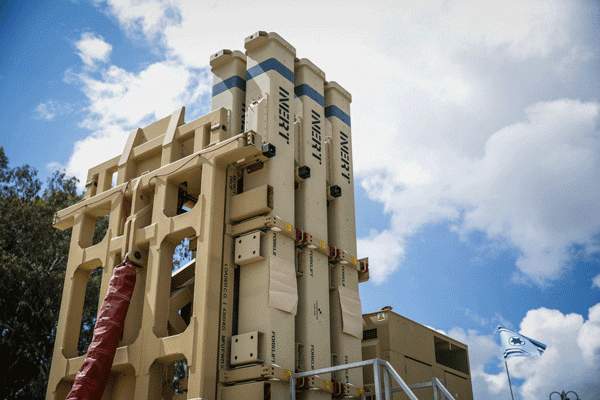It would take a systematic review to figure out what went wrong, but even now it is clear that the system, which was unable to hit its targets, suffered a serious operational and technological failure.
To the credit of the team operating the David’s Sling battery deployed near the Israel-Syria border, the challenge they faced on Monday was highly complicated.
The projectiles launched in Syria were Russian-made OTR-21 Tochka missiles—tactical ballistic missiles whose trajectory profile differs greatly from other missiles. This may be why the IAF’s radars identified them as a threat to Israeli, triggering air-raid sirens in the country’s north and subsequently, David’s Sling.

Photo by Hillel Maeir/TPS
The system’s designers will most likely review whether it could be calibrated more accurately to prevent false launches in the future, but that’s the easy part. The hard part of this investigation will delve into the operational decision-making process on the ground, which led to the order to launch David’s Sling interceptors for the very first time—only to have them miss their targets.
The problem here is not the waste of resources—each interceptor costs $1 million—but the issue of their failure. Other than their intrinsic role, air-defense systems are supposed to generate deterrence; to make the enemy think twice before launched an offensive they know is doomed to fail. One must remember that David’s Sling, which counters medium – to long-range projectiles, was designed to fend off Hezbollah’s extensive rockets and missiles arsenal.
The upside to Monday’s incident is that no harm was done on either side of the border. The Syrian missiles did not breach Israeli airspace, and the Israeli missiles landed in an open area on the Syrian side of the border.
The downside is that David’s Sling, which was declared operational in April, is clearly not ready to be deployed. It still has to undergo some improvements before it can meet the challenge of defending a sector brimming with volatile ballistic threats.
The IAF’s investigation should also see whether the Air Defense Command was perhaps too eager to employ David’s Sling. Striving to engage the enemy is a welcome trait, but it doesn’t come without risk.
Luckily, Monday’s failure took no toll on the ground, but it is doubtful that failure was what the Air Defense Command had in mind with respect to the system’s operational debut.
Yoav Limor is a veteran Israeli journalist and columnist for Israel Hayom.








